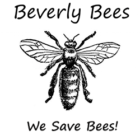Extracting Brood Frames In A Honey Bound Hive
Brian’s hive Squill recently became honey bound when a second super was not added to the hive in time and the nectar flow hit. To help prevent this hive from swarming, three days prior, I exchanged four of Squill’s honey bound frames with empty drawn comb from a starving hive in the apiary. Brian also stopped feeding this hive. When we went in to check it a few days later this is what we found.
 All four frames of empty drawn comb had been filled with nectar. Here’s a close up of one frame. The nectar looks like water in the cells.
All four frames of empty drawn comb had been filled with nectar. Here’s a close up of one frame. The nectar looks like water in the cells.
 Then it dawned on me. A big blinking red light went off in my head. Spotty Brood – check. Honey filled frames – check. No eggs or larvae – check. A queen that took an extra long time to be accepted– check.
Then it dawned on me. A big blinking red light went off in my head. Spotty Brood – check. Honey filled frames – check. No eggs or larvae – check. A queen that took an extra long time to be accepted– check.

I was starting to realize this was not a honey bound hive. Although this queen had been laying with an amazing brood pattern just two weeks prior, she was now failing and the bees knew this from the beginning. Why they had not tried to supercede her I’m not sure. Queen cups had been in the hive but they were always empty. It was becoming obvious to me this queen had to go.
Unfortunately, being Memorial Day weekend, the local queen supplier was not around. Downpours were scheduled to begin the next day and last for a week. I knew if Brian and I could not get a queen today it would be a week before we would be able to go in the hive and install a new queen.
Squill’s queen was still there but not laying, so we left her in the hive and decided to try extracting 5 frames of capped and uncapped honey from the brood frames to give her one more chance to lay until we could get a new queen. I was doubtful it would work but it was still worth a shot. Brian also alternated the frames so that one frame was foundation, the next was a honey or nectar filled frame, hoping the bees would use the nectar and honey to draw out the adjacent foundation (This, by the way, did work. I guess because they had no brood to rear they began drawing comb like crazy).
We took 5 frames into the house and extracted them in the kitchen using a hand extractor. This was the result. A beautiful light spring honey!

Since some of this honey was uncapped and some may have been from the organic cane sugar we were feeding this hive, we knew we couldn’t keep it. We planned to feed it all back to the bees. With uncapped honey in the mix, all the jars we extracted had to be frozen to prevent the honey from fermenting. Uncapped honey has a high water content and will easily ferment at room temperature. That’s why it’s important to wait until the honey is capped before extracting it. In retrospect, most of this honey was near the capping point and if we had waited a week it probably all would have been capped by then. After feeding some back to the hives that needed it, we wound up with seven pint jars of honey.
 I snuck a taste and it was delicious! The honey had a sweet pungent floral taste. I love spring time honey! Somehow it captures the delicate taste of flowers and spring air all wrapped into one. I wish we could have kept it for ourselves. But within a week, with all the rain we had, all of this honey was consumed and enjoyed by the other new hives in the apiary. At least I got out of making sugar syrup for the week. Thanks Squill! Now it’s off to get you a new queen.
I snuck a taste and it was delicious! The honey had a sweet pungent floral taste. I love spring time honey! Somehow it captures the delicate taste of flowers and spring air all wrapped into one. I wish we could have kept it for ourselves. But within a week, with all the rain we had, all of this honey was consumed and enjoyed by the other new hives in the apiary. At least I got out of making sugar syrup for the week. Thanks Squill! Now it’s off to get you a new queen.
Other Posts You May Enjoy:
